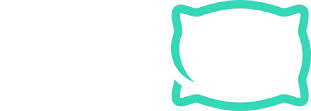Have you been wondering how to sleep better through your pregnancy?
If so, you’re not alone!
In fact, in the UK alone, millions of women experience sleep disturbances due to pregnancy. It’s uncomfortable and can make your days and nights a lot more difficult than they need to be!
That’s why we reached out to experienced obstetricians and surveyed hundreds of pregnant women to find the best positions for sleeping while pregnant.
In this article, we’ll be discussing each and everything you need to know about surviving nights during pregnancy. We’ll also cover seven tried and tested positions that can make your sleep better.
So, without further ado, Let's get started!
Understanding Maternal Sleep Practice
It’s important to understand why sleep is so important during pregnancy and why it can be difficult at times. The most common reason for disturbed sleep patterns is Physiological Changes:
Physiological Changes Affecting Sleep
Pregnancy is a time of significant physiological transformation as the body adapts to accommodate the developing fetus. These changes often lead to alterations in sleep patterns, which can impact the quality of sleep a pregnant woman gets. One of the most common complaints among pregnant women is difficulty falling asleep due to physical discomfort, hormonal shifts, and increased anxiety.
The expanding uterus can pressure the bladder leading to frequent urination, especially at night, which disrupts sleep. Furthermore, hormonal changes can cause restless legs syndrome and increase the likelihood of snoring or sleep apnea, making it challenging to get the best night's sleep.
Common Sleep Challenges During Pregnancy
Here are some of the most common challenges that can affect sleep during pregnancy:

Leg Cramps
Pregnant women often experience leg cramps, especially during the night. These sudden, involuntary muscle contractions can cause discomfort and disturb a good night's sleep. Leg cramps usually occur due to increased blood volume and pressure on the nerves and blood vessels in the legs. Adopting proper sleeping positions is one of the best ways to alleviate this discomfort. Positions that promote blood flow, such as sleeping on the left side, can help reduce the frequency of cramps. Regular stretching before bedtime can also help.
Restless Legs Syndrome
Restless Legs Syndrome (RLS) is another common sleep challenge during pregnancy. It causes an irresistible urge to move your legs, often disrupting sleep. RLS usually occurs due to hormonal changes and iron deficiencies. Pregnant women with RLS may find relief by adjusting their sleep positions or using cushions for support. Regular exercise and a balanced diet can also help manage RLS.
Frequent Urination
As pregnancy progresses, the growing uterus puts pressure on the bladder, leading to frequent urination. This can interrupt sleep and cause fatigue. While you cannot prevent this entirely, you can manage it by limiting fluid intake before bedtime and using the bathroom right before sleep. Using a pregnancy pillow to support your upper body can also help reduce the pressure on your bladder.
Insomnia
Many pregnant women struggle with insomnia, which involves difficulty falling or staying asleep. Hormonal changes, anxiety, and physical discomforts often contribute to insomnia. Healthy sleep practices, such as maintaining a regular sleep schedule and creating a comfortable sleep environment, can promote better sleep. Relaxation techniques like deep breathing and meditation can also be beneficial.
Sleep Apnea
Sleep apnea, characterized by pauses in breathing during sleep, can occur during pregnancy due to hormonal changes and weight gain. It can lead to snoring, shortness of breath, and frequent awakenings, disrupting sleep. Women with sleep apnea should consult their healthcare provider for appropriate treatment. Sleeping on your side and using pillows to elevate the upper body can help improve breathing.
Heartburn and Indigestion
Heartburn and indigestion are common during pregnancy, especially in the third trimester. These conditions can cause discomfort and trouble sleeping. Eating small, frequent meals and avoiding spicy and fatty foods can help manage heartburn. Also, lying in a semi-upright position can prevent stomach acid from rising into the esophagus.
Back Pain
Lower back pain or sciatica is another common sleep challenge during pregnancy. It is caused by the hormonal changes that lead to loosening of the ligaments and the extra weight in the abdomen. Pregnancy pillows can help support the lower back and reduce discomfort. Also, sleeping on your side with a pillow between your legs can provide relief.
Snoring and Shortness of Breath
Snoring and shortness of breath can increase as pregnancy progresses due to hormonal changes and weight gain. These conditions can disrupt sleep and may be signs of sleep apnea. Pregnant women experiencing these symptoms should consult their healthcare provider. Maintaining a healthy weight and sleeping on your side can help manage these symptoms.
General Discomfort
General discomfort, often due to the growing belly and hormonal changes, can make it difficult to find a comfortable sleeping position. Using pregnancy pillows and experimenting with different positions can help you achieve a better night's sleep. It's essential to listen to your body and adjust your sleep position as needed for maximum comfort.
Impact of Maternal Sleep Position on Pregnancy Outcomes

The position a pregnant woman assumes while sleeping has been found to impact pregnancy outcomes profoundly. One study found that women who went to sleep on their backs had double the risk of stillbirth compared with those who fell asleep on their sides. It is believed that sleeping on your back can compress major blood vessels, impeding blood flow to the fetus and potentially leading to fetal growth restriction.
According to the NSW Health and Tommy's Research, the optimal position for a pregnant woman to sleep in is on her side, particularly from the 28th week of pregnancy onwards. This position helps to maximize blood flow to the baby, ensuring adequate oxygen and nutrient supply.
Despite these findings, many women are unaware of the potential risks associated with certain sleep positions during pregnancy. Therefore, we've researched the best sleeping positions to ensure pregnant women get enough rest and minimize the risks of stillbirth or low birth weight.
7 Best Sleeping Positions for Pregnant Women
Based on our research, here are maternal sleep practices that can help promote healthy pregnancy outcomes:
-
Sleep On Side (SOS)
One of the most recommended positions to sleep while pregnant is the Sleep On Side (SOS) position. This position provides optimal circulation for both the mother and the baby, ensuring a good night's sleep. It also places minimal pressure on the mother's organs, making it a comfortable choice for most pregnant women. By adopting this sleep position, you can lower the risk of snoring and improve digestion, which are common issues during pregnancy.
-
Left Side Sleeping
Many experts recommend left-side sleeping as the ideal maternal sleep position. This recommendation is because it allows nutrient-packed blood a more accessible route from your heart to the placenta, nourishing your little one. This position also helps your kidneys efficiently eliminate waste products, reducing swelling in your feet, ankles, and hands. Sleeping on your left side also reduces the chance of suffering from heartburn, a joint discomfort during pregnancy.
-
Right Side Sleeping
While left-side sleeping is often touted as the best sleep position, right-side sleeping is also a safe and comfortable option. It provides similar benefits to left-side sleeping, such as improved digestion and reduced back pain. Although the blood flow might not be as optimal as when sleeping on the left side, it still ensures a healthy supply to the baby. Right-side sleeping can be a good alternative for those who struggle to maintain a single position throughout the night.
-
Side Sleeping with a Pillow Between the Legs
Adding a pillow between your legs while side sleeping can enhance your comfort and promote better alignment of your hips and spine. This sleeping position can alleviate back pain and leg cramps, common complaints among pregnant people. The pillow acts as a cushion, reducing stress on the lower back and hips, giving you a more restful sleep.
-
Side Sleeping with a Pregnancy Pillow
A pregnancy pillow can be a lifesaver for many expecting mothers struggling to sleep comfortably. These pillows support a pregnant body's unique shape and needs. Using a pregnancy pillow while side sleeping can provide extra support to your belly, back, and legs. It can also help maintain a steady side position, reducing the risk of stomach sleeping or rolling onto your back, which can lead to adverse pregnancy outcomes.
-
Lying on Your Side with Knees Bent
Lying on your side with your knees bent is another comfortable sleep position during pregnancy. This position makes your heart's job easier as it doesn't have to work as hard to pump blood around your body. It also creates room for your growing belly, reducing the risk of late pregnancy stillbirth. This position can be made even more comfortable by placing a pillow under your belly for extra support.
-
Modified SOS with a Pillow Under the Abdomen
The modified SOS sleep position involves sleeping on your side with a pillow under your abdomen. This position offers additional support to your growing belly, relieving strain from your back muscles and spine. It can also reduce the pressure on your bladder, leading to fewer bathroom trips during the night. This way, you can achieve a longer and uninterrupted good night's sleep, which is vital for your health and your baby's health.

How Can Pregnancy Pillows Enhance Comfort in Various Sleep Positions?
Now that we understand the best sleeping positions for pregnant women let's explore how pregnancy pillows can enhance comfort in various sleep positions. Pregnancy pillows are specifically designed to provide head, back, hip, and neck support, making it easier for expectant mothers to find a comfortable sleep position.
They are particularly beneficial for side sleeping, which is often considered the best sleep position during pregnancy as it promotes optimal blood flow to the fetus. This position promotes better blood flow and reduces pressure on the back and hips, thus alleviating discomfort and helping mothers fall asleep more easily.
Different Types of Pregnancy Pillows
There are different types of pregnancy pillows available on the market, such as:
C-shaped pillows provide support and comfort for the head, neck, back, and pelvic area. They are excellent for relieving any pelvic tension and promoting proper spinal alignment. This can be particularly beneficial as the pregnancy progresses and the increased belly size causes strain on the spine.
Full-length pregnancy pillows come in two different styles - straight and flexible. Both styles can be used to ease the adjustment to new sleeping positions during pregnancy and keep the neck, back, and hips aligned during sleep. They also reduce pressure around the hips and lower back, providing full-body support and enhancing overall comfort.
U-shaped pillows, finally, are perfect for propping up your upper body during pregnancy sleeping. The U-shape allows you to prop up your back and shoulders, providing relief from the burning sensation and allowing you to sleep more comfortably.
Additional Tips For Pregnancy Sleep

Apart from using the right sleep position and the best-suited pregnancy pillow, there are some additional tips that can help pregnant women get better sleep. For instance:
-
Invest in a Good Mattress: Your mattress plays a vital role in your sleep quality. Opt for a mattress that supports your body's natural curves and reduces pressure points.
-
Use a Mattress Topper: A mattress topper can add extra comfort and support, especially if you're dealing with back pain or hip discomfort during pregnancy.
-
Maintain a Regular Sleep Schedule: Try to go to bed and wake up at the same time every day. This can regulate your body's internal clock and help you fall asleep more quickly and easily.
-
Limit Fluid Intake Before Bed: To avoid frequent bathroom trips at night, limit your fluid intake in the evening. However, ensure you're staying well-hydrated throughout the day.
-
Relaxation Techniques: Practices like yoga, meditation, or deep breathing exercises can help relax your mind and body, making it easier to fall asleep.
-
Avoid Heavy Meals Before Bed: Eating a large meal close to bedtime can cause discomfort and indigestion, disrupting your sleep. Aim for lighter meals in the evening.
-
Exercise Regularly: Regular physical activity can help you fall asleep faster and enjoy deeper sleep. Just be sure not to exercise too close to bedtime, as it might interfere with your sleep.
By doing so, you can ensure a comfortable sleep during pregnancy and enjoy its health benefits.
FAQs

What Sleeping Positions Should Be Avoided During Pregnancy?
Stomach sleeping and back sleeping should be avoided during pregnancy as they can cause discomfort and potential complications. After the fifth month, sleeping on your side, preferably the left, is recommended for the best blood flow to the fetus. This will reduce the risk of stillbirth.
What Happens if I Accidentally Sleep on My Back While Pregnant?
You should be aware that sleeping on your back during pregnancy, particularly in the later stages, can cause issues like backaches, breathing difficulties, and low blood pressure. However, if you accidentally find yourself in this position, don't panic. Simply reposition yourself to a safer posture, preferably on your left side, considered one of the best positions during pregnancy for optimal blood flow.
Is It Ok to Sleep on Right Side While Pregnant?
Yes, sleeping on your right side during pregnancy is generally safe. However, the left side is optimal as it improves blood flow to the fetus. Sleeping on your back should be avoided after the first trimester due to potential pressure on the inferior vena cava. So, it's important to find comfortable positions during pregnancy that benefit both you and your baby.
When Do You Stop Sleeping On Your Back While Pregnant?
You should avoid sleeping on your back during pregnancy after the first trimester. Research indicates that from the 20th week of pregnancy onwards, lying on your back can increase the risk of stillbirth and other complications due to the weight of the uterus pressing on major blood vessels.
Wrap Up
To sum up, it's important to maintain a comfortable sleep routine during pregnancy. This includes adopting the best sleep positions for pregnant women and using supportive pregnancy pillows to enhance comfort. Other tips like limiting fluid intake before bed and regular exercise can help you get sufficient restful sleep.
We hope you found this article helpful and that it will help you enjoy better sleep during your pregnancy.
If you're looking for the best mattress to help you have a comfortable sleep during pregnancy, be sure to check out CraftedBeds.Our all mattress provides the perfect combination of comfort and support to relieve pressure points, improve spinal alignment, and reduce stress. Plus, with free delivery all over the Uk, you're sure to find the perfect mattress for your needs. So, don’t wait any longer - get the restful sleep you deserve with CraftedBeds!





